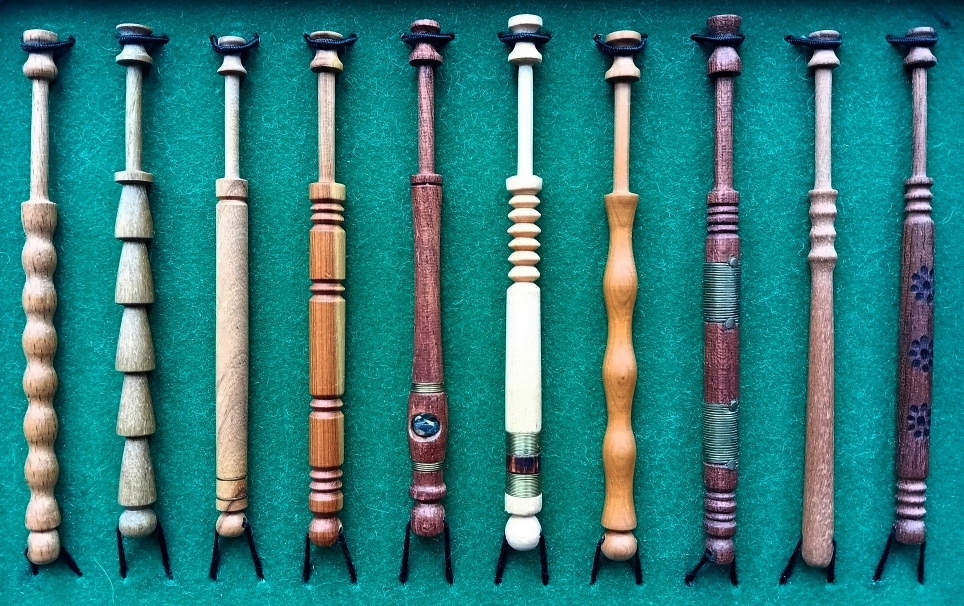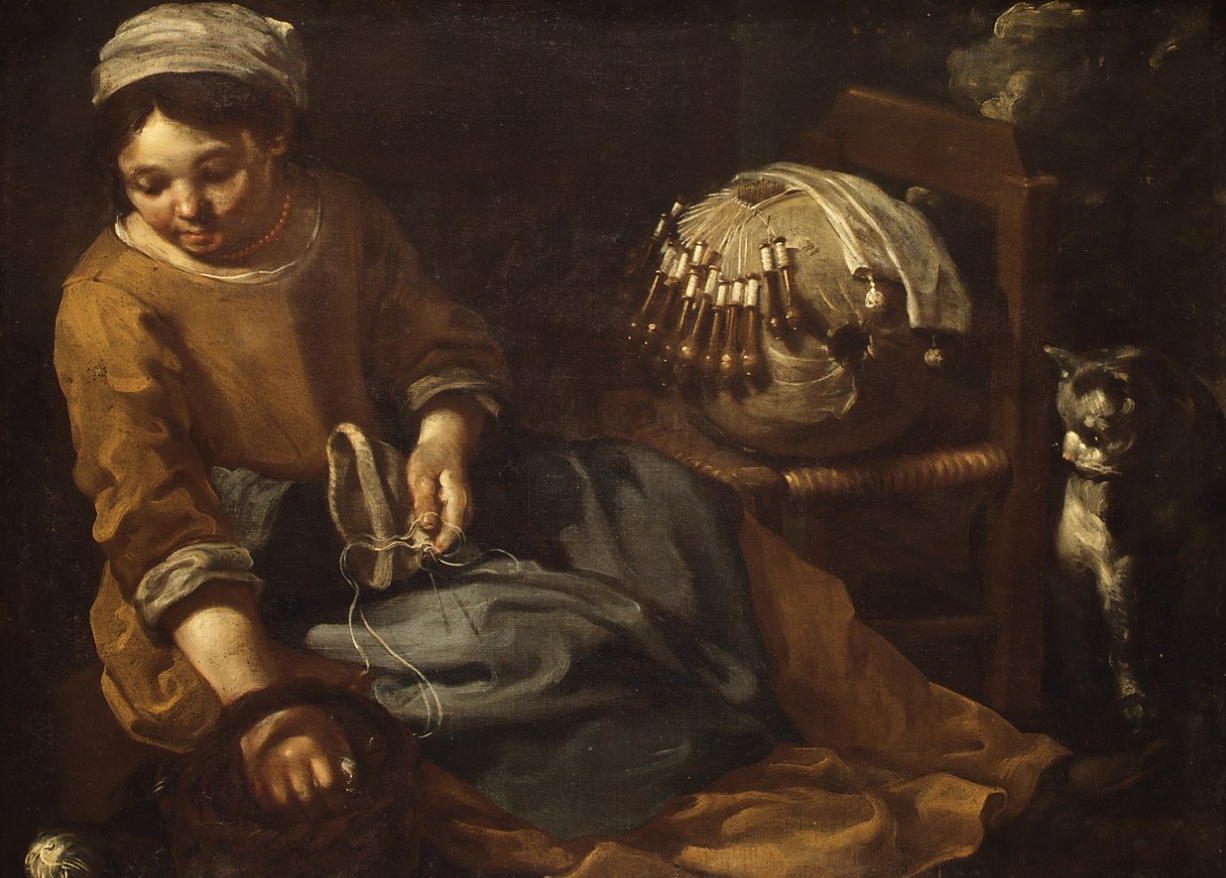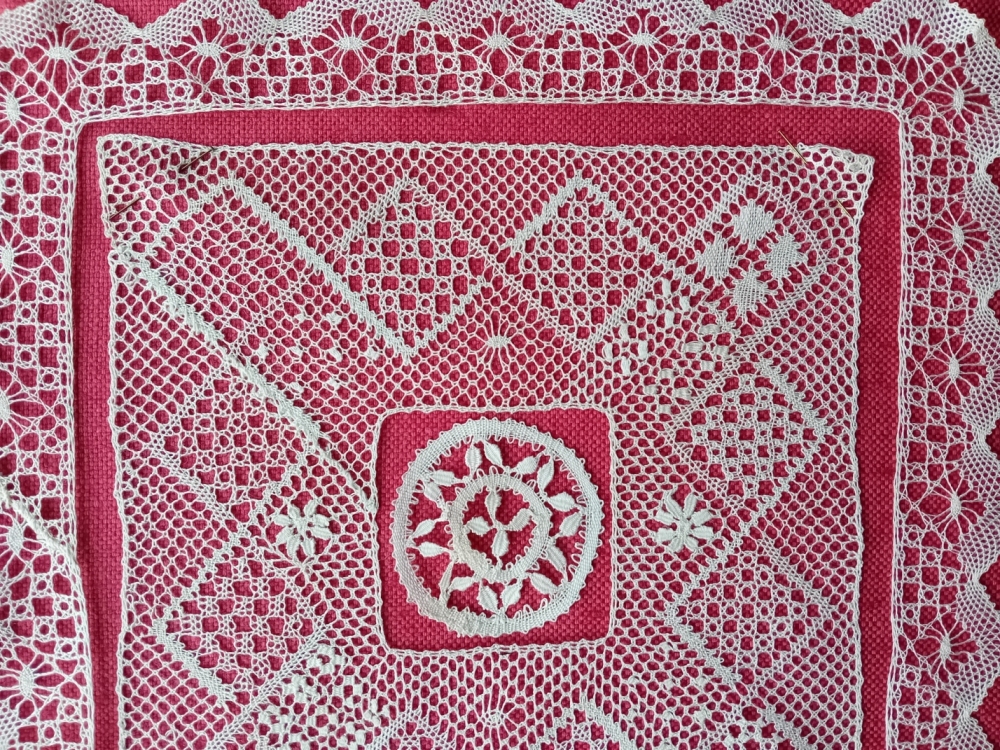I was raised in a region of Britain with a long tradition of commercial bobbin lacemaking. In her spare time my mother made intricate lace on a domed pillow fringed with beaded bobbins and festooned with brass pins, and in his, my father turned fancy wooden bobbins on a small lathe. Happily, thanks to the educational efforts of craftswomen* the world over, some of whom pass on their skills in person, some through books or YouTube videos, there’s little danger the art of bobbin lacemaking will ever vanish completely. However, if it, and similarly fascinating traditional handicrafts, are ever to enjoy anything resembling a renaissance, game developers need to recognise their potential as relaxing digital pursuits.
* Most bobbin lacemakers seem to be women
If I ever get around to writing Part 4 of my series on Creative Europe’s seriously flawed game development grants, it will take the form of a list of suggestions. As one half of CE’s declared raison d’être is to “safeguard, develop and promote European cultural and linguistic diversity and heritage” one of those suggestions will be that the organisation stops funding titles with no discernible link to European culture or history, and focuses instead on encouraging games like The Darkest Files, Velvet 89, Comrades and Barons: Gates of Freedom, and (working title) Lacemaking Simulator 2024.

LS2024 is just a diaphanous figment of my imagination at present, but if something resembling it ever reached the market, assuming the execution was competent, I’m sure there’d be people who’d appreciate the mindfulness it encouraged and the skills it taught.
Compared to not-disimilar crafts such as cross-stitch and embroidery – which are, in a small way, already represented and reproduced in video gaming – bobbin lacemaking is more physical and musical. Any lacemaking sim that failed to convey the characteristic click and clatter of worked bobbins would be a sorry thing indeed, and today there’s no reason why a digital treatment couldn’t replicate the important role gravity* plays in the pastime too.

* The bobbins in bobbin lacemaking have three functions. They store the thread used to make the piece, their weight provides essential tension (the examples pictured above were made by my Dad and, in use, would have been weighted with decorative beads), and their design allows lacemakers to manipulate thread without touching and, potentially, sullying it.

Of course the really special thing about a lacemaking sim is that it could teach a new generation of lacemakers cheaply and elegantly. Whenever a ‘Lacemaker Simulator 2024’ user became confused, that confusion would be banished with a dab of the ‘toggle text hints’ or ‘show me what to do next’ key.

There are, I reckon, myriad traditional crafts that could flourish in digital form. Ironically, if we do ever see a flurry of handicraft sims, thanks to Creative Europe’s utterly daft obsession with narrative, none of them are likely to display a “Co-funded by the European Union” message while they load.


Looms are, of course, the predecessors to modern computers. You’d think something could be down with that.
Somewhat vaguely related, I was on a tour of the Queen Mary earlier this month. While down in the engine room it really hit home just how many fascinating historic skill sets will likely go extinct someday.
Even if those with the skills to maintain a 1930s-era ocean liner could somehow manage to pass on their knowledge before passing on themselves, how could anyone even put it into practice?
“Steam ship boiler room simulator” just might be a bit too niche unfortunately.
I was visiting Sellafield two-and-a-half decades ago. One of the hands-on/game things involved keeping an eye on various needles in gauges and pushing the appropriate button before they left the safe zone. I doubt it had anything to do with monitoring a nuclear plant, or at least was a very-much sped-up version.
If some jobs are replaced by AI, is the AI the repository of knowledge?
I’m thinking mechanical machines might have a longer tail, as there’s a limited number of sub-mechanisms but someone attuned to their operations could figure out how they work.
I was going to say the early digital stuff is probably more in danger as it was quickly replaced by something newer and better. But then again there’s SAM Simulator… and an Apollo Program thing(?)
I visited the Laboe Naval Memorial near Kiel, in which one can walk through a U-boat. Having played ‘Wolfpack’, I could make an educated guess as to what most of the main controls were for.
In general, the bananas technological imperative has given us black boxes. For technology to be human and repairable in the long term, it has to be visible and comprehensible. Steam pipes can be traced, and parts can be made by humans on reasonably simple machines. The further we get from this, the more catastrophic any wobble in the world’s political or infrastructural systems become. Add on climate change and the low-tech approach, which eschews adding technological complexity for the sake of it, seems the only sensible path.
Even recently, cars could be diagnosed through sound, smell and feel rather than sensor-reported error codes. Remove the human from the process at our collective peril. The ease with which we abdicate responsibility to ‘AI’ or anything on a screen means that “following the sat-nav despite the sign saying ‘road closed'” quite easily becomes “fire the missile because the computer simulation says so” rather than using our human faculties. Skynet will only come about because we want it to, in search of snuggly, delusional certainty.
I have been sewing a bag using my great-great-aunt’s 1911 hand-cranked sewing machine. No electricity required, it’s quiet, working perfectly 113 years after it was made and makes a beautiful stitch. Sometimes we ought to think more about what’s necessary rather than what we’re told we must buy.
I haven’t watched the videos so I assume you need two hands for lacemaking, with further permutations of fingers.
How would you control that, Tim? One mouse seems not enough. Keyboard? Two hand-thingies in VR? Twin-stick gamepad?
(Got your 900-degree Logitech/Thrustmaster/Hori Heavy Machinery wheel yet? Thinking of repurposing it for a mangel/cider press/Gutenberg printer simulator?)
A one-armed/handed lacemaker would be disadvantaged, but I think they could get by.
(When THC goes tit-up, there’s a slim chance I will attempt to make my fortune by penning a ‘lost’ Thomas Hardy novel about a one-armed war veteran who makes a tenuous living making bobbin lace.)
LS2024 would be playable with either mouse or keyboard. The spread of keys on the latter mirrors the spread of bobbins on a pillow rather nicely.
>>Got your 900-degree Logitech/Thrustmaster/Hori Heavy Machinery wheel yet?
I am massively tempted, but all THC-related purchases have to go through Isla, and she’s not talking to me at the moment because of my head-in-the-sand approach to THC’s finances.